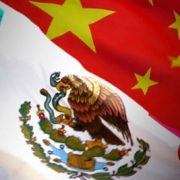OECD Trims Global Growth Forecast on Emerging-Market Slowdown
The OECD trimmed its global economic forecasts for the second time in three months as slower growth in emerging markets spilled over into countries such as Germany and Japan.
World output will expand 2.9 percent in 2015 and 3.3 percent in 2016, down from the 3 percent and 3.6 percent predicted in September, the Organization for Economic Cooperation and Development said in a semi-annual report published Monday.
“Global growth prospects have clouded this year,” the Paris-based organization said. “The outlook for emerging-market economies is a key source of global uncertainty at present.”
With Russia and Brazil in recession and China poised to deliver its weakest expansion in more than two decades, the economies that powered world growth in recent years are now slowing it down. Developed economies are feeling the brunt in the form of reduced demand for both commodities and manufactured goods.
China, Russia
The OECD barely changed its forecasts for Chinese output, pegging growth at 6.8 percent this year and 6.5 percent in 2016. Yet Brazil’s economy is now seen shrinking 3.1 percent this year and 1.2 percent next, compared with contractions of 2.8 percent and 0.7 percent predicted in September.
Russian gross domestic product is on track to drop 4 percent in 2015 and 0.4 percent next year, according to the report. Since the OECD didn’t give an estimate for Russia in September, that compares with a June prediction for a contraction of 3.1 percent in 2015 and expansion of 0.8 percent in 2016.
For emerging markets, “challenges have increased,” the OECD said. Should their situation deteriorate, “growth would also be hit in the euro area, as well as Japan.”
Japanese GDP will grow 0.6 percent this year and 1 percent next, according to the report. While the 2015 forecast is unchanged, the 2016 one has been cut from 1.2 percent.
“The outlook for Japan remains softer than in other advanced economies, despite an anticipated upturn in real wage growth,” the OECD said. “This reflects a larger drag exerted by weak external demand, especially in Asia, and strong fiscal headwinds.”
Refugee Crisis
The euro area’s expansion is now seen at 1.5 percent in 2015 and 1.8 percent in 2016, a reduction by 0.1 percentage point for each year.
In terms of the economy, Europe’s immigration crisis represents a much needed potential boost, the OECD said. It estimates that the influx of refugees may add between 0.1 and 0.2 points to growth in 2016 and 2017 thanks to extra government spending.
“Asylum seekers need not impose an unmanageable economic burden,” the OECD said. “If the refugees who stay are rapidly integrated into European society, they are likely to benefit the host countries.”
The U.S. expansion remains on track, with the OECD predicting growth of 2.4 percent this year and 2.5 percent in 2016. U.K. GDP is seen rising 2.4 percent in both years, little changed from September.
In the U.S., “output remains on a solid growth trajectory, propelled by household demand,” the OECD said. “Monetary policy remains very accommodative, which is consistent with stubbornly below-target inflation, subdued wage pressures and hints of downward pressure on inflation expectations.”
The OECD also offered its first glimpse of 2017, predicting a global expansion of 3.6 percent. It sees growth of 2.4 percent in the U.S., 1.9 percent in the euro area and 6.2 percent in China.
Copyright: Bloomberg








